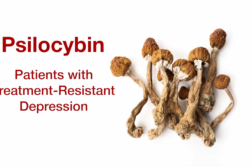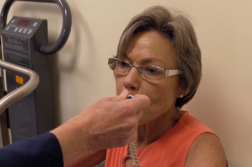ORLANDO, Fla. (Ivanhoe Newswire) — About 108 million Americans struggle with high blood pressure. It’s a problem that can raise your risk for heart attack, stroke, and other serious medical conditions. The good news is you can lower your blood pressure with some simple diet changes. Find out what foods to choose.
Nearly half of adults in the U.S. have high blood pressure! Estimates show at least one in three Americans should be on blood pressure meds.
Daniel Munoz, MD, a cardiologist at Vanderbilt University Medical Center, said, “Medications can be tough to take. They can be complicated to take, particularly the more medications somebody is prescribed.”
But you can fight this common health threat with what you eat! First: include foods rich in Vitamin C like bell peppers, cherries, and grapefruit. One study found people with high blood pressure who ate foods high in Vitamin C reduced their readings by five millimeters of mercury. Salmon and flaxseed contain omega-threes which have been shown to lessen inflammation and lower blood pressure. Dark chocolate is rich in flavonoids that have blood pressure lowering effects. Tomatoes contain lycopene, which has been linked to reductions in blood pressure. Also, despite their bad rap, eggs, have been shown to lower both blood pressure and cholesterol in recent studies. Just remember not having high blood pressure can lead to overall better health.
“A dramatic improvement and benefit for preventing cardiovascular disease, heart attack and stroke,” stated Mark Supiano, MD, a geriatrics investigator at the University of Utah Health.
The American Heart Association recently lowered their definitions of high blood pressure. They used to define it as 140 over 90, but now a blood pressure reading is considered high if it’s 130 over 80 or above.
Contributors to this news report include: Julie Marks, Producer; and Roque Correa, Editor.
CAN FOOD LOWER BLOOD PRESSURE?
REPORT #2787
BACKGROUND: Nearly half of American adults have high blood pressure, according to a new report by the American Heart Association. High blood pressure, or hypertension, is when the force of your blood pushing against the walls of your blood vessels, is consistently too high. When the heart beats, it creates pressure that pushes blood through a network of tube-shaped blood vessels, which include arteries, veins, and capillaries. This pressure, or blood pressure, is the result of two forces. The first force, called systolic pressure, occurs as blood pumps out of the heart and into the arteries that are part of the circulatory system. The second force, called diastolic pressure, is created as the heart rests between heart beats. Both of these forces are represented by numbers in a blood pressure reading.
(Source: https://www.uab.edu/news/health/item/10140-nearly-half-of-u-s-adults-have-high-blood-pressure#:~:text=Nearly%20half%20of%20American%20adults,pressure%20guidelines%20released%20in%202017 and https://www.heart.org/en/health-topics/high-blood-pressure/the-facts-about-high-blood-pressure/what-is-high-blood-pressure)
HARM OF HIGH BLOOD PRESSURE: The primary way that high blood pressure causes harm is by increasing the workload of the heart and blood vessels. Over time, the force and friction of high blood pressure damages the tissues inside the arteries. In turn, LDL, or bad, cholesterol forms plaque along tiny tears in the artery walls, signifying the start of atherosclerosis. As the plaque and damage increases, the narrower the insides of the arteries become which raises blood pressure and starts a vicious circle. This can ultimately lead to other conditions ranging from arrhythmia to heart attack and stroke. You may not feel that anything is wrong, but high blood pressure could be quietly causing damage that can threaten your health. The best prevention is knowing your numbers and making changes that matter in order to prevent and manage high blood pressure.
NEW TREATMENT COULD LOWER BLOOD PRESSURE: According to a report in the Journal of Agricultural and Food Chemistry, researchers have made transgenic rice that contains several anti-hypertensive peptides. When given to hypertensive rats, the rice lowered their blood pressure. The researchers introduced a gene to rice plants that consisted of nine ACE-inhibitory peptides and a blood-vessel-relaxing peptide. They confirmed that the plants made high levels of the peptides. The researchers then extracted total protein from the transgenic rice and administered them to rats. They noticed just two hours after treatment, the hypertensive rats showed a reduction in blood pressure, while rats treated with wild-type rice proteins did not. The treatment was performed over a 5-week period showing flour from the transgenic rice also reduced blood pressure, and this effect remained 1 week later. The treated rats had no obvious side effects in terms of growth, development, or blood biochemistry. Researchers say if these peptides have the same effects in humans, a 150-pound adult would need to only eat about half a tablespoon of the special rice daily to prevent and treat hypertension.
(Source: https://www.sciencedaily.com/releases/2020/06/200624082715.htm)
* For More Information, Contact:
Mark Supiano, MD Craig Boerner, Media Relations
mark.supiano@utah.edu craig.boerner@vumc.org
(801) 587-9103
Free weekly e-mail on Medical Breakthroughs from Ivanhoe. To sign up: http://www.ivanhoe.com/ftk



